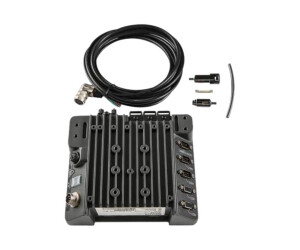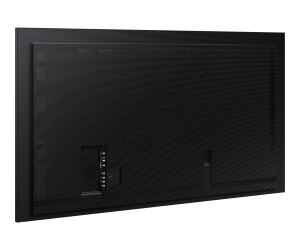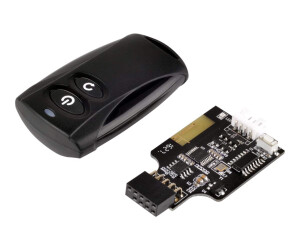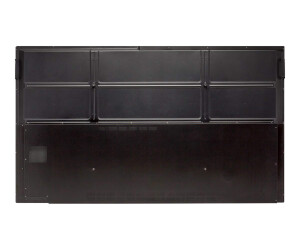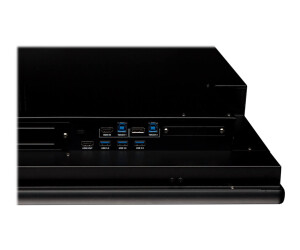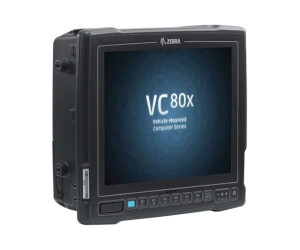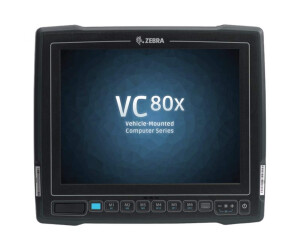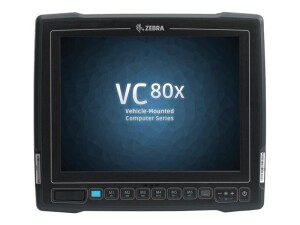RS-232
RS-232
The RS-232 interface, also known as Recommended Standard 232, is a widely used serial interface for data transmission between devices. It was developed in the 1960s by the Electronics Industries Association (EIA) and has since become an industry standard.
The RS-232 interface consists of several components required for data transmission. A typical RS-232 connection includes a transmitter and a receiver connected via a serial cable. The interface uses differential signaling, where data is transmitted as voltage differences between two lines. The two main lines are known as Transmit Data (TXD) and Receive Data (RXD).
The RS-232 interface supports a data transfer rate of up to 20 kilobits per second, although faster transmission rates are possible when using specific RS-232 variants such as RS-232C or RS-232D. The transmission is asynchronous, which means that the data does not need to be synchronized with a fixed clock. Instead, start and stop bits are used to mark the beginning and end of a data packet.
A typical RS-232 connection uses a 9-pin D-sub connector, although 25-pin variants are also available. The pinout of the connectors is standardized, facilitating compatibility between different devices. The pins serve various functions, including data transmission, handshaking (control of data flow between devices), ground connection, and optional control lines such as Clear To Send (CTS) and Request To Send (RTS).
The RS-232 interface was originally developed for connecting modems to computers. However, it has also found application in a variety of other devices, including printers, measuring instruments, industrial control systems, and communication devices. Due to its reliability and long history, RS-232 is still commonly used today, although it is increasingly being replaced by more modern interfaces such as USB and Ethernet.
To use the RS-232 interface, the connected devices must have the appropriate hardware and drivers. Modern computers are often no longer equipped with an RS-232 interface, but there are USB-to-RS-232 adapters that enable connection to RS-232 devices. On the software side, applications on the computer can access the RS-232 interface through a programming interface (API) to send and receive data.
Advantages of the RS-232 interface:
Easy connection: The RS-232 interface uses standardized pinout and is widely adopted. This makes it easy to connect devices and establish communication.
Reliability: RS-232 provides robust and reliable data transmission. Differential signaling minimizes interference and ensures a stable connection.
Long history: RS-232 has existed for several decades and has established itself as a reliable industry standard. Many devices and systems still use RS-232, facilitating compatibility and interoperability.
Simple implementation: The RS-232 interface does not require complex protocol or data formatting. It can utilize simple asynchronous data transmission methods, simplifying implementation.
Support for handshaking: RS-232 supports handshaking signals such as CTS and RTS, which can control the data flow between devices. This allows better control over data transmission and prevents data loss.
Disadvantages of the RS-232 interface:
Limited transmission speed: RS-232 was designed for lower transmission speeds and typically supports rates up to 20 kilobits per second. For modern applications that need to transmit large amounts of data in a short time, RS-232 may not be sufficient.
Limited cable length: The maximum cable length for RS-232 connections is typically 15 meters. Over longer distances, there can be signal losses and errors.
Lack of plug-and-play functionality: RS-232 requires manual configuration and initialization. The devices need to be set up accordingly, and it can be challenging to use the interface on different systems without additional drivers or adjustments.
Larger physical connector: The original 9-pin D-sub connector of RS-232 is relatively large compared to modern connectors like USB or Ethernet. This can affect portability and space requirements.
Limited functionality: RS-232 provides basic serial communication but does not support advanced features such as network capability, real-time transmission, or complex protocols. For more demanding applications, modern interfaces like USB or Ethernet may be better suited.
The RS-232 interface offers a simple and reliable means of transferring data between devices. Although it does not provide the speed and flexibility of modern interfaces, it is still widely used in many applications, particularly in areas where stable and reliable connections are crucial.



